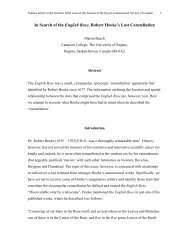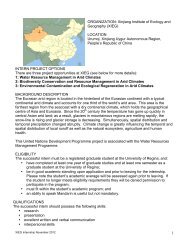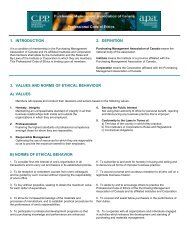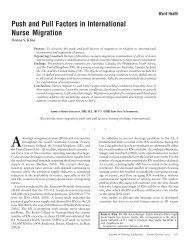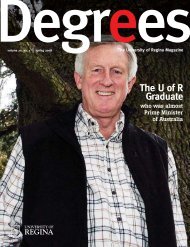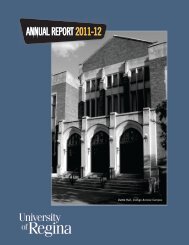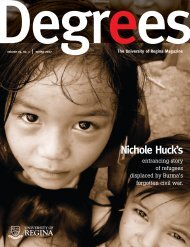The Indigenous Land Claims in New Zealand and Canada
The Indigenous Land Claims in New Zealand and Canada
The Indigenous Land Claims in New Zealand and Canada
Create successful ePaper yourself
Turn your PDF publications into a flip-book with our unique Google optimized e-Paper software.
adm<strong>in</strong>istration <strong>and</strong> development of the l<strong>and</strong>. <strong>The</strong> Quebec government, the James BayEnergy Corporation, Hydro Quebec <strong>and</strong> the James Bay Development Corporation havespecific rights to develop resources on Category III l<strong>and</strong>s (DIAND 1993, 2).Controversy over development on Category II <strong>and</strong> III l<strong>and</strong>s has emerged with the Great Whalehydro-electric project (James Bay II). While opposition by the Cree <strong>and</strong> Inuit, as well as fromenvironmental <strong>and</strong> other <strong>in</strong>terest groups, resulted <strong>in</strong> the government of Quebec <strong>in</strong>def<strong>in</strong>itely ‘shelv<strong>in</strong>g’the project <strong>in</strong> 1994, it <strong>in</strong> no way altered the government’s position that it was with<strong>in</strong> its rights <strong>in</strong>pursu<strong>in</strong>g such development even if it affected Category II l<strong>and</strong>s. In fact, accord<strong>in</strong>g to the Gr<strong>and</strong>Council of the Crees at its 1997 Annual General Assembly,(Hydro-Quebec) has recently made public a plan to divert the Whapmagoostuie River <strong>and</strong>the Rupert River <strong>in</strong>to exist<strong>in</strong>g reservoirs of the La Gr<strong>and</strong>e complex … this river diversionwould totally submerge Epsikameesh (Lake Bienville), the headwaters of the Great WhaleRiver … a sacred area, a major calv<strong>in</strong>g ground for the <strong>in</strong>l<strong>and</strong> caribou, <strong>and</strong> a sanctuaryfor mar<strong>in</strong>e life, water fowl <strong>and</strong> other forms of wildlife … [this] proposed diversion wouldhave the same impact as if the James Bay II scheme (now shelved) had gone ahead (GCC1998(1), 4).This is one of the ‘darker sides of the agreement’ that the Assembly of First Nations Gr<strong>and</strong> ChiefMathew Coon Come referred to when he addressed the 1997 General Assembly of the James BayCree. Specifically, he said,We have always declared that through the Agreement the Crees gave permission forone hydroelectric project <strong>in</strong> our territory. <strong>The</strong> governments have stated, however, thatthey believe we surrendered <strong>and</strong> gave up all our rights, title, <strong>and</strong> claims <strong>in</strong> <strong>and</strong> to ourwaters <strong>and</strong> l<strong>and</strong>s (GCC 1998 (1), 2).Compensation of $235 million was provided under the terms of the JBNQA <strong>and</strong> paid out over20 years as follows: $75 million paid out <strong>in</strong> cash over 20 years, $75 million <strong>in</strong> Quebec bonds matur<strong>in</strong>g<strong>in</strong> 1995 <strong>and</strong> $75 million when the hydro-electric project was completed (or by 1996). Of the total, theInuit received approximately $90 million <strong>and</strong> the Cree $135 million. <strong>The</strong> Naskapi received $9 million.In the case of the Inuit <strong>and</strong> the Crees, the moneys were paid to <strong>The</strong> Makivik Corporation <strong>and</strong> the CreeRegional Authority, respectively. <strong>The</strong>se bodies were the legal entities established under the terms ofthe JBNQA “to receive <strong>and</strong> adm<strong>in</strong>ister the compensation moneys, oversee the implementation of the15



